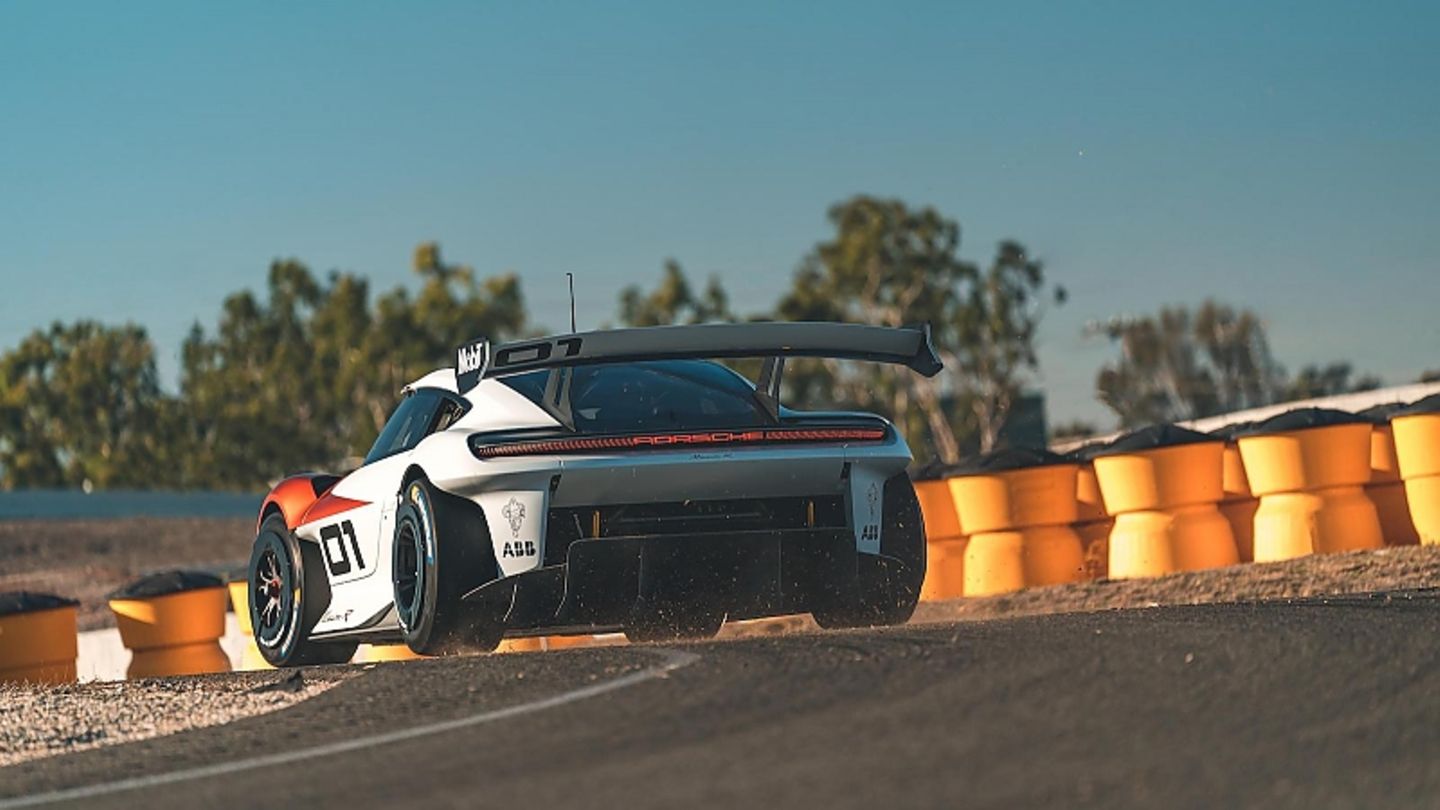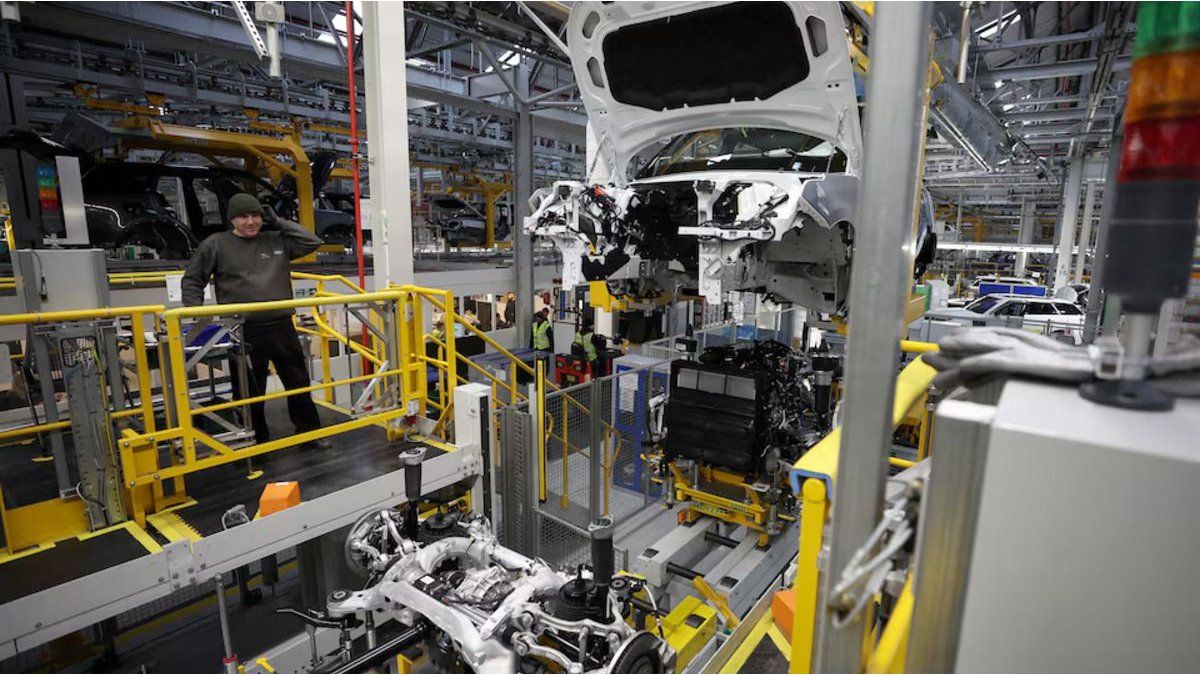Aside from Ferrari, there is hardly any other car manufacturer that is so closely interwoven with motorsport as Porsche. The trend towards electromobility is putting the sports car brands under more pressure than ever. An electric racing car like the Porsche Mission R should secure the future on the racetrack.
Porsche works driver Lars Kern takes it easy on the first two laps – comparatively. But when the Michelin tires quickly got used to the driver and the route, there is no stopping the handling course, freshly warmed up. “It’s not all witchcraft,” says Kern and after a few hot laps he peels out of the vehicle with the symbolic name Mission R. continues the tradition of the Supercup and Carreracup. In the middle of the decade it could be so far that Porsche is rolling out its electric racing series, not least in order to support the increasing number of series models with plugs in their positioning and to make customers want the electromobility, which is all too imposed for sports car fans.
The performance data of the Porsche Mission R are impressive – but they are even more spectacular to drive. In racing trim, the all-wheel-drive flounder has an output of 500 kW / 680 PS and a top speed of 300 km / h. In qualification mode it gets even wilder, because then 380 kW / 517 PS at the front and 420 kW / 571 PS at the rear make the car a calculable beast, which surprisingly confidently takes its up to 800 kW / 1088 PS with warm tires on the winding road Road bans. This is not only due to the powerful electric motors on the front and rear axles, but especially to the battery pack between them behind the pilot, which currently weighs 1.5 tons for the test subjects. A current Cup 911 weighs 300 kilograms less ready to race. The power of the two electric motors reaches the axles via straight-toothed input gears and mechanical differential locks. A specially developed oil cooling system that also has the motors under control offers thermal advantages for the 82 kWh battery pack: because it uses the entire cell surface, a particularly large flow of heat can be transported from the battery into the cooling system.
Climb in, strap on and go – when you start at full throttle, your facial features almost derail and the speed limit of 100 races by in 2.5 seconds, while test driver Lars Kern calmly steers towards the next combination of curves. In any case, the driver does not have time to look at the small digital display in the Mission R when the going gets down to business. “We want to reach around 1,430 kilograms by the start of the racing series,” says project manager Matthias Scholz looking ahead. In addition, batteries with a capacity of up to 85 kilowatt hours will find their way into the racing cars of the future, which should be enough for a race of around half an hour. The engine output of the Mission R is currently twice as large in the training trim as that of a comparable 911 GT3 racing car. Back in the pit lane, it should be recharged with 900 volts in a quarter of an hour. We learned from the ailing formula E.
If you look at the inside and outside of the Porsche Mission R, grab the steering wheel, which could have come from a Formula 1 racing car, and look at the construction around the roll cage, bucket seat and obvious racing technology, you can hardly believe that the project is still going into series production should last four to five years. Instead of the normal racing mesh cage, the pilot is protected by a crash-proof structure made of carbon fiber reinforced plastic, which looks like an exoskeleton, which in addition to maximum rigidity also saves weight. Just in case there is a escape hatch directly above the driver. This time it doesn’t work, but climbing into the racing car is exhausting enough – it’s a bit easier to get out.
Back on the slopes there is a golden rule: after every straight straight there is a curve. Recuperation is almost exclusively via the front axle. However, not automatically, as in an electric series model, depending on the driving program, but in the Mission R only when you slow down before a combination of bends and step heavily into the iron. During an emergency stop like before the tight hairpin, the braking maneuver by record time driver Lars Kern ensures that the battery pack behind the seat gets a real boost of vitamins with up to 800 kilowatts of recuperation. “Racing is about agility and not about setting the pace. The car should be fun,” emphasizes Matthias Scholz. In the later small-series model or the expected electric sports cars such as the Porsche 718 Cayman or the 718 Boxster, this not only provides additional kilometers of range, but also the ability to use the power gained to accelerate out of the curve via a boost. That had already helped the Le Mans racing car in the Porsche 919 achieve its victories and pulverized the competition. The Mission R should succeed this time too – a racing series that fertilizes road vehicles with its technology – and vice versa.
Smiled at years ago, now unavoidable: Motorsport is also increasingly relying on sustainability and here Porsche wants to be a pioneer in its goal of being CO2-neutral by 2030. Numerous add-on parts of the racing car are made of natural fiber-reinforced plastic. The basis is flax fibers from agriculture. The production of regeneratively produced fibers produces 85 percent less CO2 than the production of carbon fibers. When getting in, the pilot sees this on the front splitter, the side skirts and the diffuser, among other things. There are also natural fibers inside, for example on the rear bulkhead and in the narrow seat shell. All of this is intended to ensure that motorsport on the racetrack also has a future with electric cars and does not just become classic events. But in the end it’s all about one thing again – being faster than the other and not just on the racetrack. And the Porsche Mission R looks very promising. Now you just have to get the costs under control, because they are ultimately the be-all and end-all for the success of a racing series. And from the racetrack it is faster than ever before to the series models of the future – electric, of course.
Source From: Stern
I am a 24-year-old writer and journalist who has been working in the news industry for the past two years. I write primarily about market news, so if you’re looking for insights into what’s going on in the stock market or economic indicators, you’ve come to the right place. I also dabble in writing articles on lifestyle trends and pop culture news.




